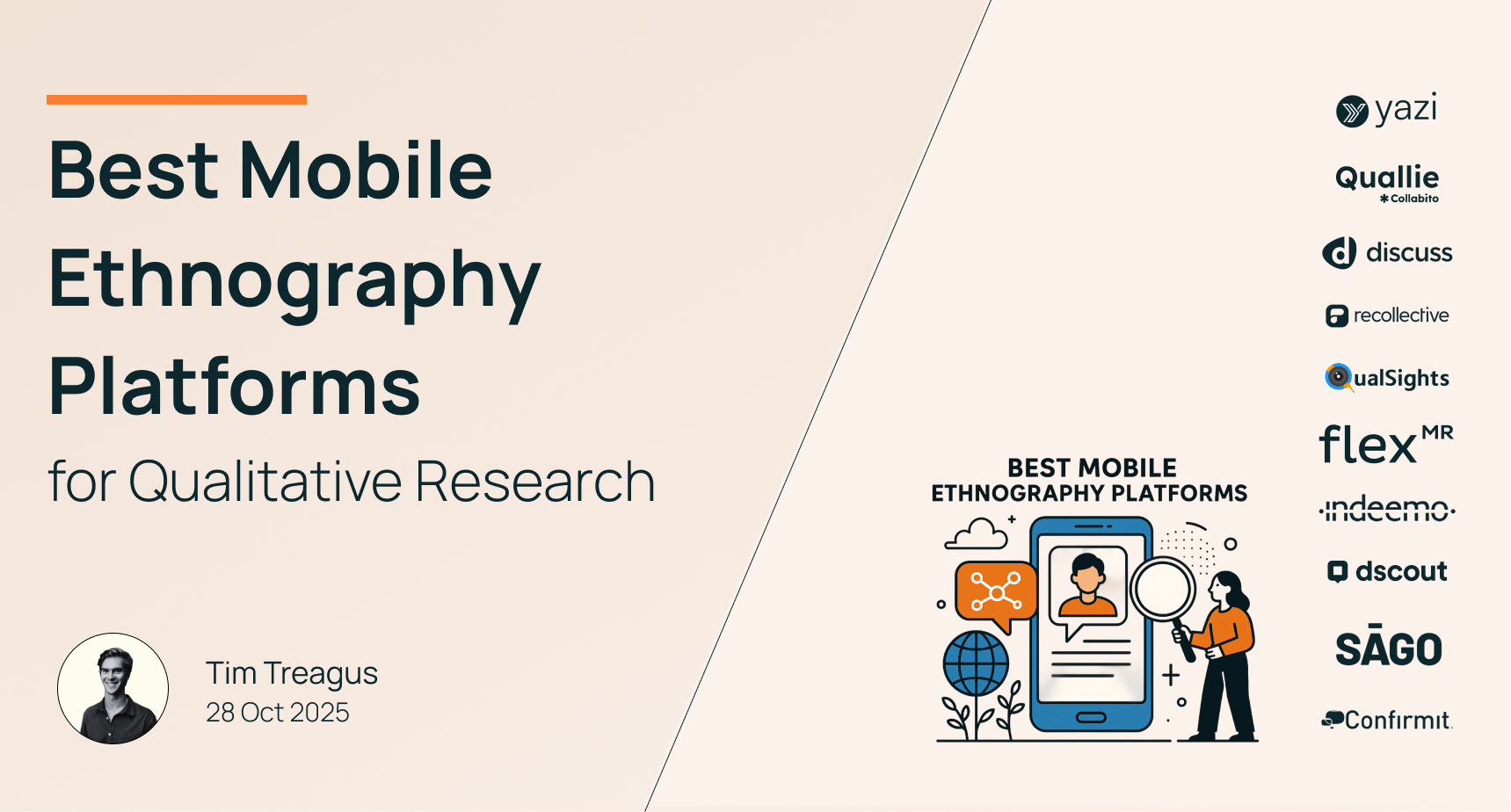Best Mobile Ethnography Platforms for Qualitative Research: A Data-Driven Comparison
So here's the thing about mobile ethnography—it's become pretty essential for capturing what participants are actually doing in real life, not just what they say they're doing. But here's where it gets tricky: the platform you pick can make or break your study outcomes. I'm talking about everything from whether people actually finish your study to how rich your data ends up being, plus what you'll end up paying for it all.
I've been diving deep into ten mobile ethnography platforms that research agencies and enterprise insight teams are actually using. Each one takes a totally different approach to getting participants engaged, collecting data, and managing research workflows. Once you understand these differences, you can pick tools that actually match what you're trying to accomplish with your specific study.
Platform Overview

Detailed Platform Analysis
1. Yazi
Approach: This one's pretty clever—it's a WhatsApp-based qualitative research platform with AI moderation built right in.
Key Strengths:
- No app download headaches—it just works inside WhatsApp, which people already have
- Crazy good response rates (I'm seeing 75-85% typically) because there's basically no friction
- Absolutely kills it in emerging markets where WhatsApp is basically how everyone communicates
- AI-powered interviewer that can handle scaled depth conversations—pretty wild stuff
- Super low participant burden since they're using an interface they know like the back of their hand
Limitations:
- Not as video-heavy as some of the video-first platforms out there
- You need participants who actually use WhatsApp (though that's 2.8 billion people, so...)
- Still building brand recognition compared to the older established players
- Doesn't play as nicely with traditional research tech stacks yet
Best For: Multi-day diary studies, emerging market research, AI-moderated depth interviews at scale, any project where you really need people to actually complete the thing.
Typical Use Cases: Diary studies, longitudinal research, in-context interviews, shopper journey mapping, reaching demographics that are usually hard to pin down.
2. Dscout
Approach: This is the video-first mobile ethnography platform with a massive participant network backing it up.
Key Strengths:
- Seriously robust video capture capabilities with recording tools built right into the app
- Huge proprietary participant panel (150,000+ US-based folks)
- Really strong observational research features if you're doing product testing
- Well-established platform that's proven itself over time
- Comprehensive video analysis tools and highlight reel creation—pretty slick
Limitations:
- App download creates that initial "ugh, another app" friction with participants
- Higher cost structure since you're paying subscription plus project fees
- Mainly US/UK focused—if you need emerging market functionality, look elsewhere
- Video-heavy approach means participants need to invest more time
- Video files are resource-intensive to store and analyze
Best For: Video ethnography, product testing, observational research, US market studies, organizations that have dedicated resources for video analysis.
Typical Use Cases: Product usage studies, shopper research, video diaries, user experience testing, contextual inquiry.
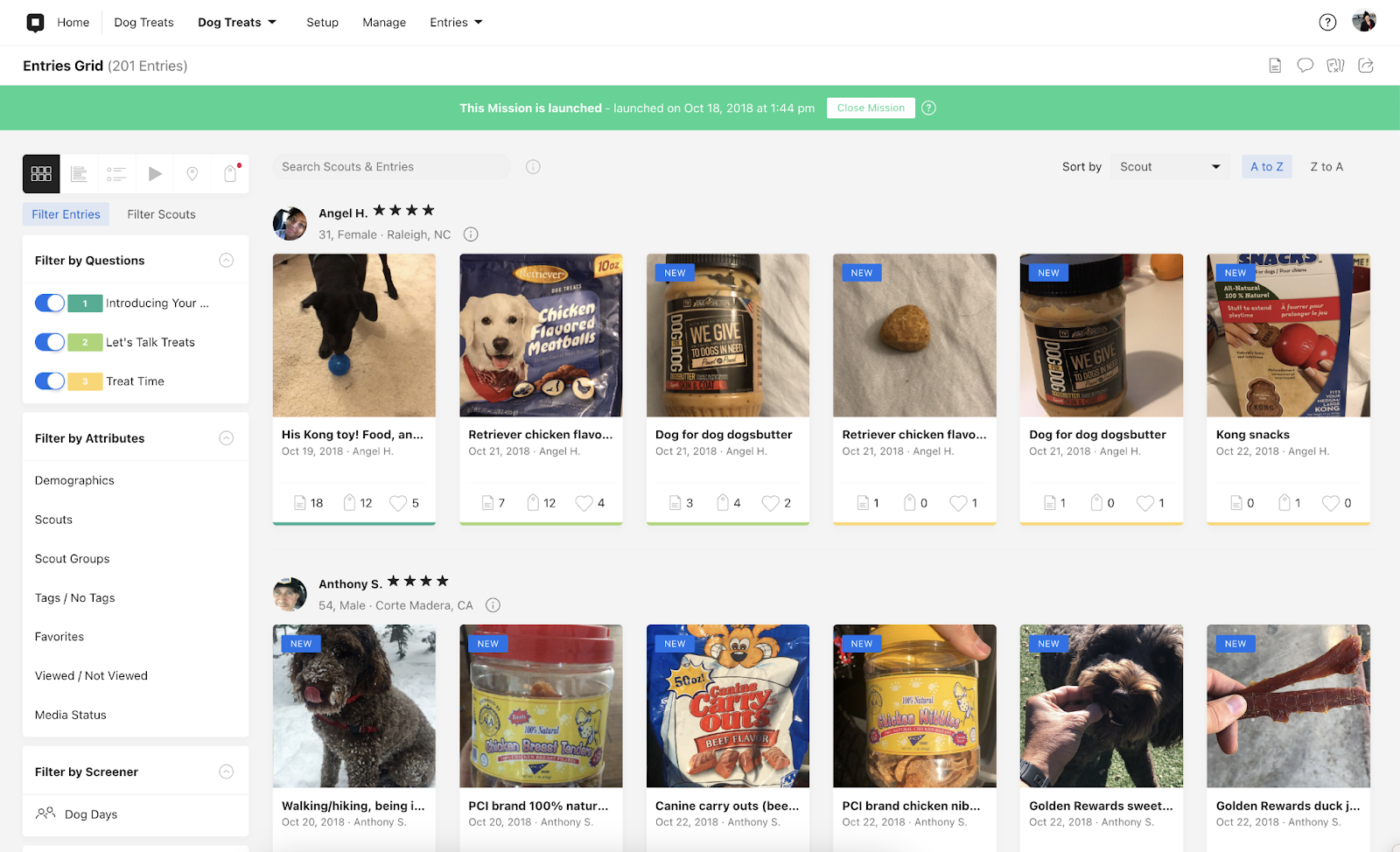
3. Indeemo
Approach: Mobile video ethnography platform where moderators can actually interact with participants in real-time.
Key Strengths:
- Really solid video diary functionality that makes recording easy for participants
- Real-time moderation features so you can probe while studies are happening
- Handles multimedia submissions (video, photo, text, audio) like a champ
- User-friendly interface that works well for both researchers and participants
- European data residency options if you need GDPR compliance
Limitations:
- Still requires app download with all the friction that brings
- Pricing can get pretty steep for smaller projects or agencies
- Works better in Europe than other regions geographically
- Video analysis workflow requires serious researcher time investment
Best For: European market research, video-centric ethnography, studies where you need real-time probing, GDPR-sensitive projects.
Typical Use Cases: Customer journey mapping, video diaries, product experience research, lifestyle ethnography.

4. Recollective
Approach: Enterprise qualitative research platform that combines communities, interviews, and ethnography all in one place.
Key Strengths:
- Comprehensive suite that covers multiple qualitative methodologies—pretty much everything you need
- Robust online community features alongside ethnography tools
- Strong security and compliance features that enterprise clients actually need
- Flexible hybrid approaches (web and mobile) so you can mix and match
- Advanced analytics and reporting capabilities that go pretty deep
Limitations:
- Enterprise-focused pricing that smaller agencies just can't swing
- Platform complexity means you'll need training and onboarding time
- Can be total overkill if you just need straightforward ethnography
- Annual licensing commitments required—no dipping your toes in
Best For: Large enterprises, multi-method research programmes, organizations running ongoing insight communities, complex research requirements.
Typical Use Cases: Online research communities, hybrid studies, longitudinal tracking, innovation research, brand communities.
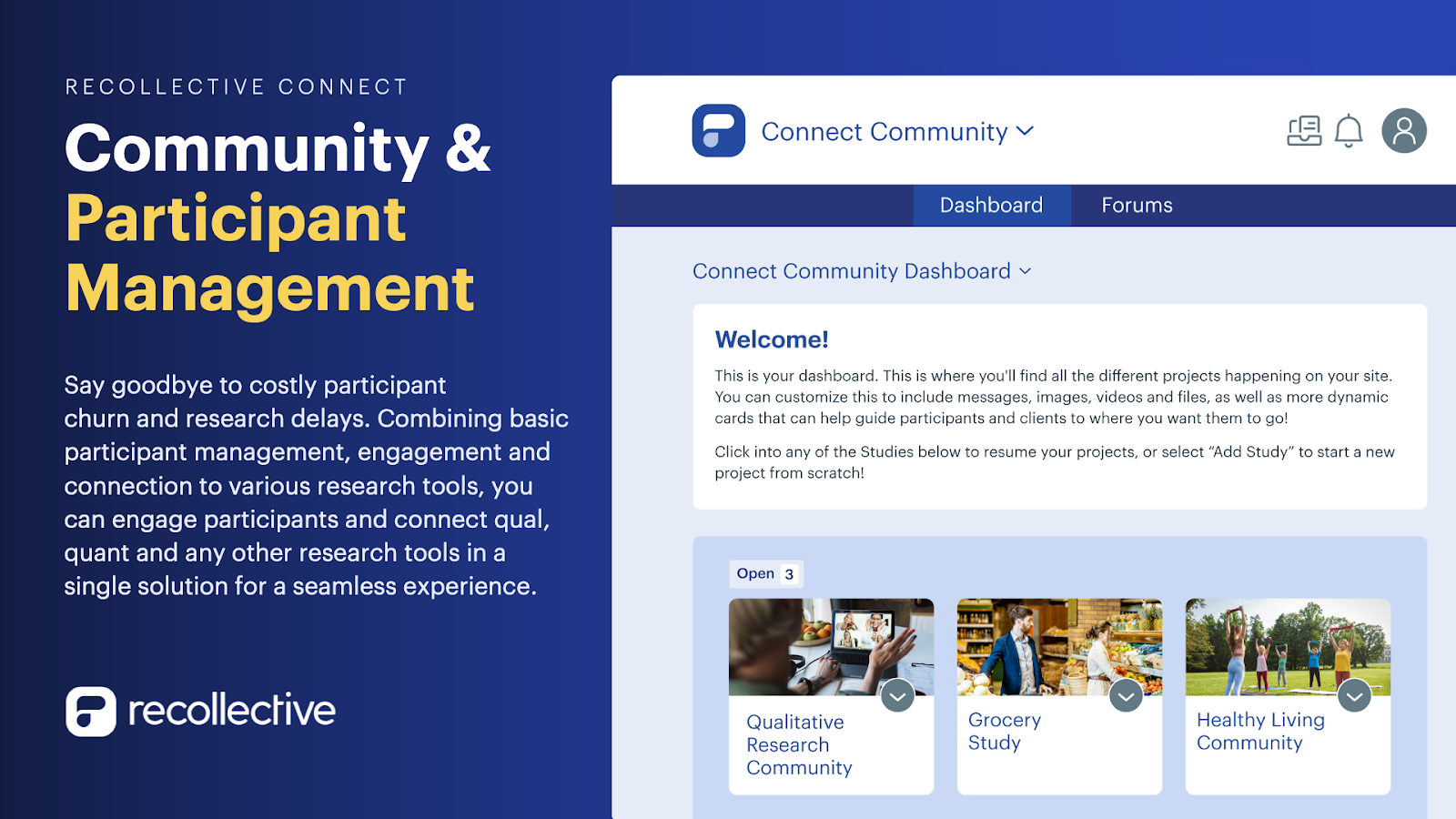
5. Qualsights
Approach: Video-first platform with live streaming capabilities and AI-powered analysis features.
Key Strengths:
- Live video streaming so you can observe in real-time—pretty cool stuff
- AI-powered video analysis with sentiment detection and theme identification
- Clean, modern interface that doesn't require a steep learning curve
- Really solid customer support and researcher training
- Participant compensation management built right in
Limitations:
- US-market focused with limited international deployment options
- Relatively new platform so smaller case study portfolio to draw from
- Video-centric approach might not fit all research questions
- Premium pricing tier that adds up
Best For: US-based research, live observation studies, organizations wanting AI-assisted video analysis, real-time research needs.
Typical Use Cases: Shop-alongs, product testing, in-home usage studies, retail ethnography.
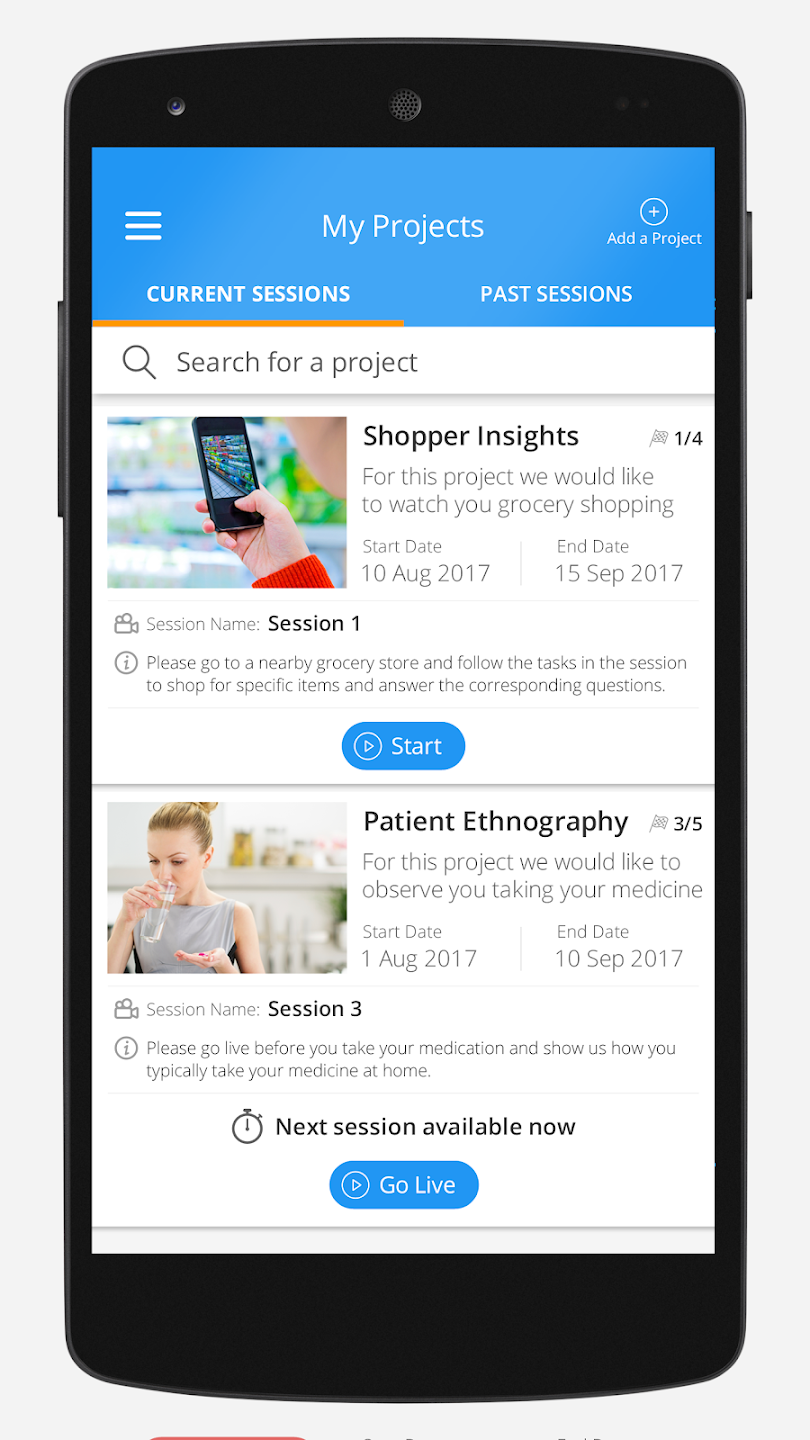
6. Discuss
Approach: Web-based platform for asynchronous discussions and qualitative research—keeps things simple.
Key Strengths:
- No app required—browser-based so participants can jump right in
- Strong discussion board functionality that captures group dynamics nicely
- Flexible multimedia submissions
- Project-based pricing that works for occasional users
- Quick setup and deployment—no lengthy onboarding process
Limitations:
- Less mobile-optimized than dedicated mobile apps
- Limited advanced features compared to the big enterprise platforms
- Video functionality isn't as robust as video-first competitors
- Smaller support team compared to the bigger players
Best For: Online focus groups, bulletin board discussions, text-based qualitative research, researchers who want straightforward tools without complexity.
Typical Use Cases: Online focus groups, multi-day discussions, concept testing, community feedback.
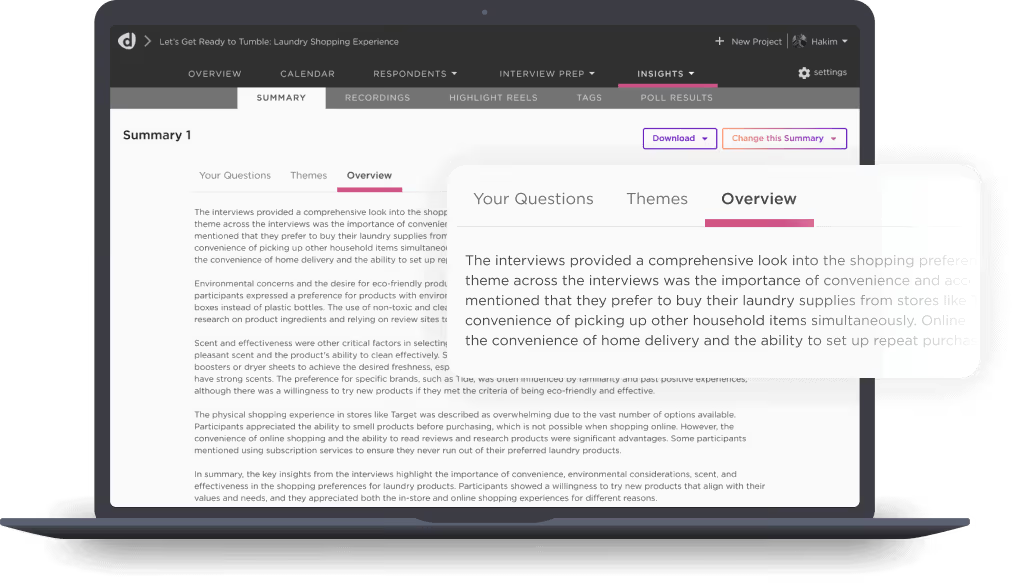
7. Quallie
Approach: Mobile qualitative research app that really focuses on making the participant experience smooth.
Key Strengths:
- Thoughtfully designed participant interface that actually works well
- Good balance of video, photo, and text capture options
- Researcher dashboard with clear data organization—no hunting around
- Responsive customer support when you need help
- Regular platform updates and improvements based on user feedback
Limitations:
- App download still required
- Smaller client base than the more established competitors
- Limited geographic track record outside UK/US markets
- Higher per-project costs for smaller studies
Best For: UK agencies, mobile-first ethnography, researchers who prioritize participant UX, mid-sized projects.
Typical Use Cases: Mobile diaries, lifestyle research, product experience tracking.
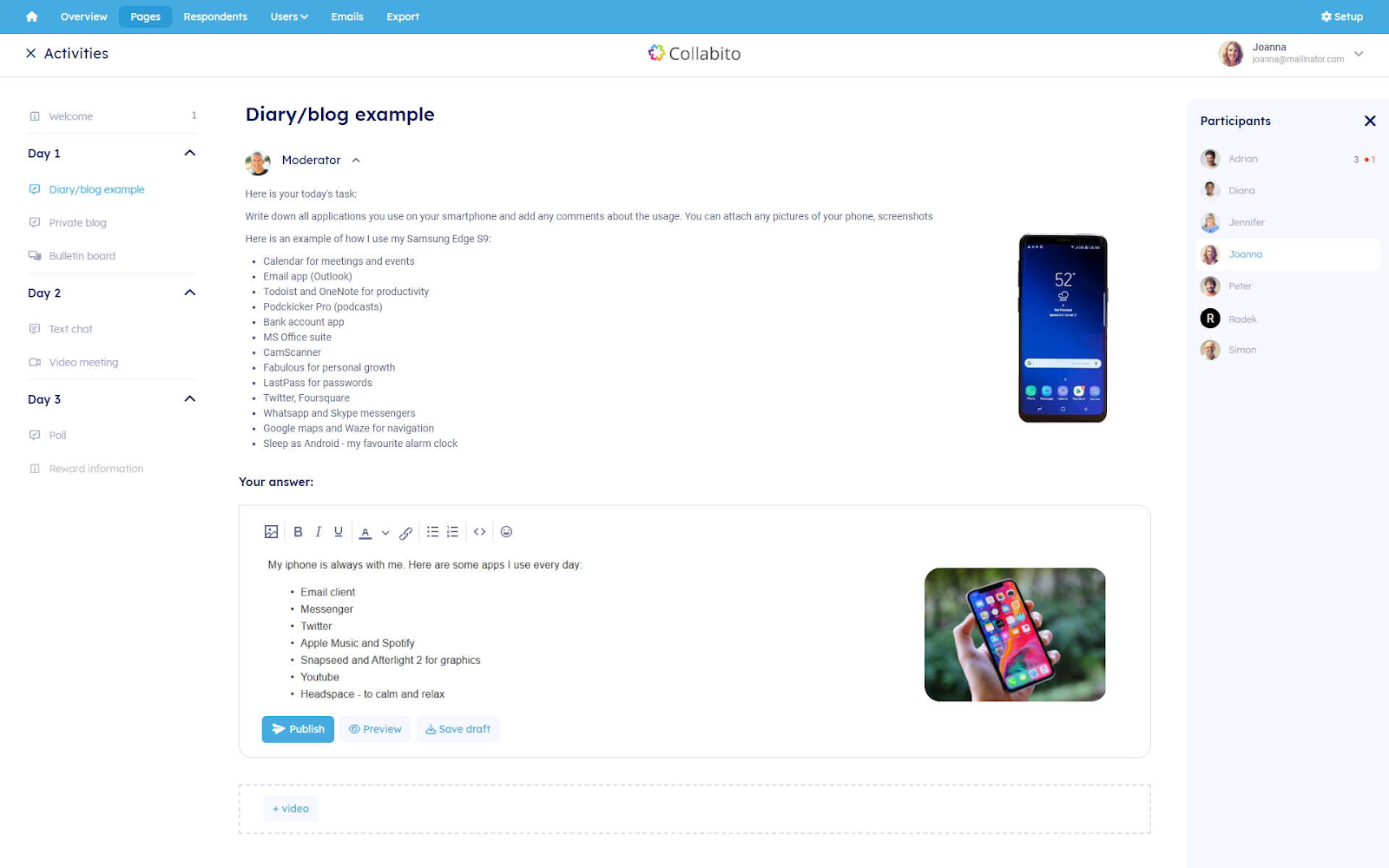
8. Sago
Approach: Full-service research solutions provider with various technology platforms—they handle the whole thing.
Key Strengths:
- Global reach with local market expertise in 90+ countries
- Panel access integrated with technology solutions
- Full-service support from design all the way to delivery
- Multiple platform options depending on your methodology
- Really strong B2B and healthcare research capabilities
Limitations:
- Technology is just one piece of their broader service offering
- Less transparent pricing—you'll need custom quotes for everything
- Probably more expensive than self-service platforms
- Platform capabilities vary by region and solution type
Best For: Complex international studies, researchers wanting full-service support, B2B research, healthcare and pharmaceutical studies.
Typical Use Cases: Global ethnography, patient journey research, B2B decision-making studies, cross-cultural research.
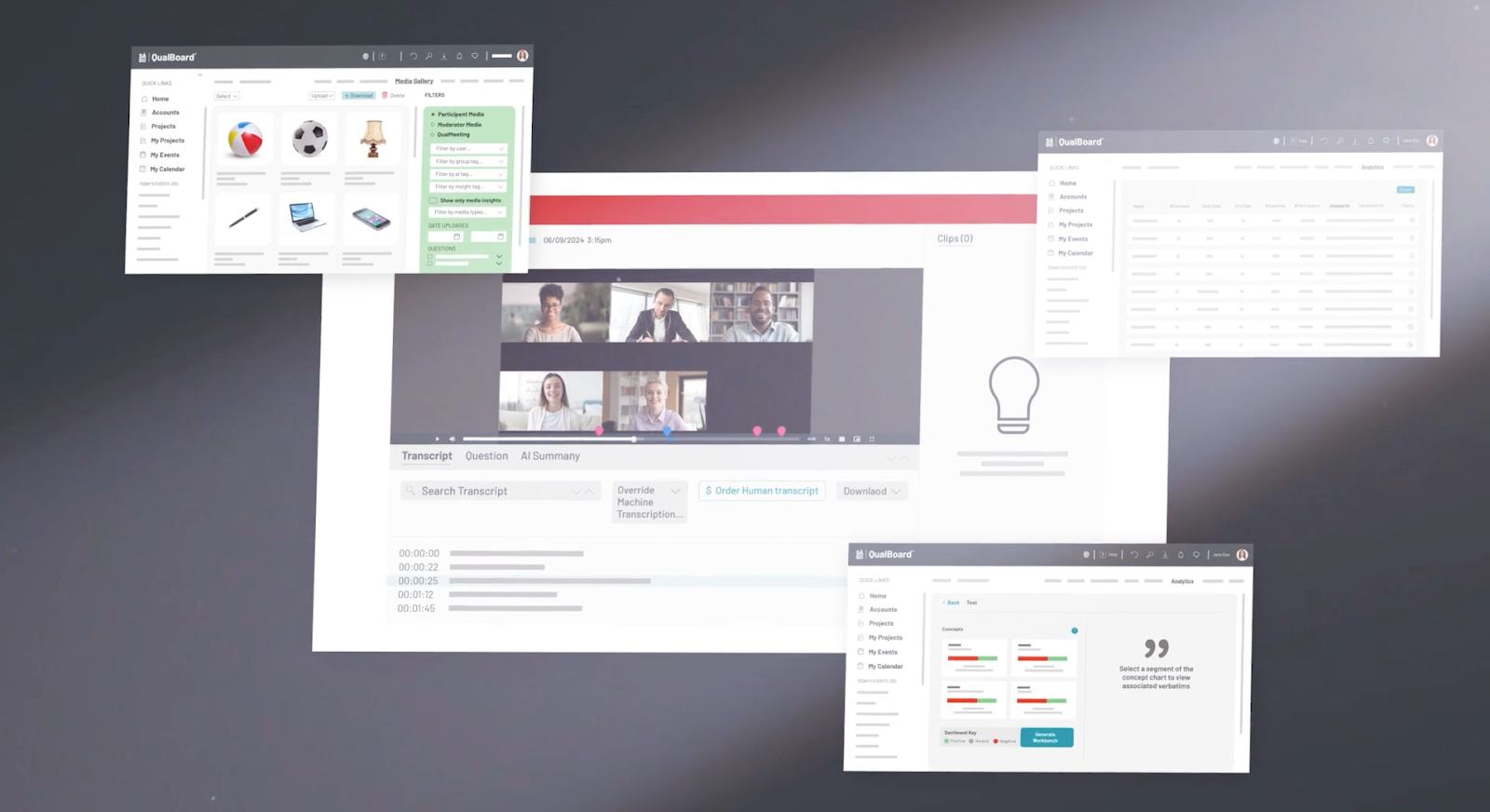
9. FlexMR
Approach: UK-based insight platform that combines communities, surveys, and qualitative tools—pretty well-rounded.
Key Strengths:
- Strong UK market presence and local support
- Integrated platform covering multiple methodologies in one place
- Good value if you're on the UK-based subscription model
- Flexibility to combine quantitative and qualitative approaches
- Regular feature development based on actual client feedback
Limitations:
- Primarily UK/Europe focused geographically
- Mobile ethnography isn't really the core platform strength
- Smaller feature set compared to the big enterprise platforms
- Less video-focused than specialist ethnography tools
Best For: UK research agencies, mixed-method projects, organizations wanting integrated insight platforms, folks with subscription budget available.
Typical Use Cases: Online communities, hybrid studies, brand tracking with qualitative depth, customer feedback programmes.
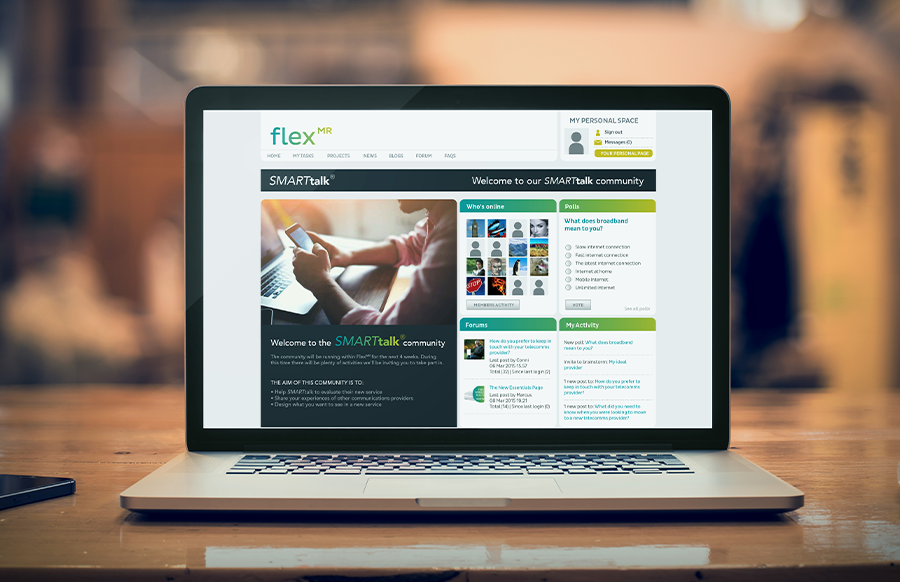
10. Forsta Confirmit
Approach: Enterprise research technology platform with a comprehensive methodology suite—the full works.
Key Strengths:
- Full enterprise-grade research infrastructure
- Strong integration capabilities with other business systems
- Advanced security and compliance features for big organizations
- Global support and multi-language capabilities
- Scalable for very large research programmes
Limitations:
- Significant investment required—enterprise pricing only, no small budgets welcome
- Complex implementation and setup process
- Requires dedicated internal resources or you'll need consultancy support
- May be overly complex if you just need straightforward ethnography
- Mobile ethnography is just one small piece of a much larger suite
Best For: Large corporations, research teams with serious budgets, organizations needing integrated research ecosystems, complex compliance requirements.
Typical Use Cases: Enterprise-wide research programmes, regulated industry research, multi-method tracking studies, global research coordination.
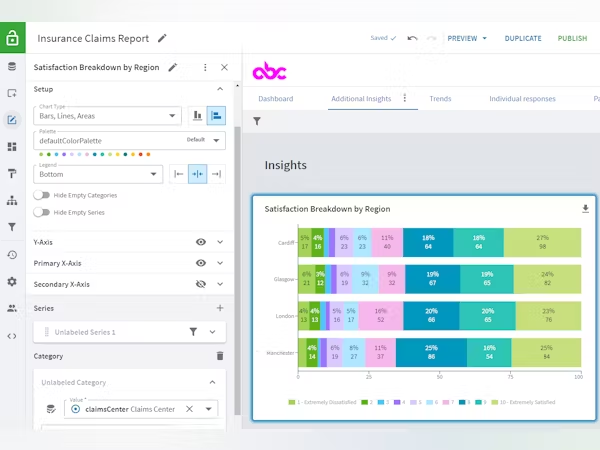
Overall Comparison with Scoring:

Response Rates: Comparative Data
Response rate is where the rubber meets the road—it directly impacts your data quality and whether your project stays on timeline. From what I've seen in published case studies and platform-reported metrics, there's definitely variation:
High Response Rate Platforms (75-85%)
- WhatsApp-based approaches (Yazi): They benefit from that zero-download friction—huge difference
- Browser-based platforms (Discuss): Easy access without any installation hassles
Moderate Response Rate Platforms (55-70%)
- Established app platforms (Dscout, Indeemo, Qualsights): Work really well when using proprietary panels
- Hybrid platforms (Recollective): Pretty variable depending on the methodology mix you're using
Enterprise Platforms (Variable)
- Full-service providers (Sago, Forsta): Response rates depend heavily on study design, recruitment quality, and how well they implement locally
Note: Response rates vary like crazy based on study design, incentives, recruitment quality, and participant demographics. Platform choice is just one factor among many—but it's an important one.
Participant Experience: Access Methods Compared
Zero-Download Approaches
Platforms: Yazi (WhatsApp), Discuss, FlexMR (web), Forsta (web option)
Advantages:
- Immediate participation without those annoying installation barriers
- Works on lower-end devices with limited storage—super important in some markets
- Familiar interfaces so participants don't need to learn anything new
- Really strong for emerging markets or groups with lower digital literacy
Trade-offs:
- May have fewer native mobile features available
- Video capture can be more cumbersome without a dedicated app
Native App Approaches
Platforms: Dscout, Indeemo, Qualsights, Quallie
Advantages:
- Rich video capture with purpose-built recording tools—makes a big difference
- Push notifications are way more reliable
- Offline functionality when participants don't have great connectivity
- Advanced features like GPS tracking, screen recording
Trade-offs:
- 15-30% drop-off during that app download/setup phase—it's real
- Requires 80-200MB storage space
- App store access required—not always straightforward
- Higher technical barriers for some demographics
Hybrid/Flexible Approaches
Platforms: Recollective, Sago, Forsta
Advantages:
- Researchers can choose the optimal access method for each specific study
- Web access for simple tasks, app for rich media capture
- Accommodates diverse participant preferences—pretty flexible
Trade-offs:
- Complexity in managing multiple access pathways
- Inconsistent participant experience across different methods
AI and Automation Features
Several platforms are getting into AI now, though the implementation varies pretty wildly:
Advanced AI Moderation:
- Yazi: AI actually conducts conversational depth interviews via WhatsApp, adapts follow-up questions, supports multiple languages—it's pretty impressive
AI-Assisted Analysis:
- Qualsights: Automated video analysis, sentiment detection, theme identification
- Forsta Confirmit: Text analytics and automated coding at enterprise scale
- Dscout: Sentiment analysis and automated video tagging
Basic Automation:
- Most platforms: Automated reminders, scheduling, basic text analysis—the usual stuff
- Indeemo, Quallie, Discuss, FlexMR: Automated workflows and reporting features
The thing about AI capabilities is they should actually match your research needs—conversational AI is great for scaled depth interviewing, while analysis AI helps when you're drowning in large datasets.
Geographic Reach Considerations
Global Emerging Markets
Strong: Yazi (WhatsApp is everywhere), Sago (they know local markets) Moderate: Forsta, Recollective (if you set them up right) Limited: Dscout, Qualsights (very US/Western focused)
Western Europe
Strong: Indeemo, FlexMR, Discuss, Recollective Good: Most platforms work pretty well in these markets
North America
Strong: Dscout (that proprietary US panel is solid), Qualsights, Recollective Good: All platforms function well in US/Canada
Asia-Pacific
Strong: Yazi (WhatsApp adoption varies), Sago (local presence matters) Variable: Others really depend on the specific country and your study design
Here's something to keep in mind: WhatsApp penetration varies globally—98%+ in Brazil, South Africa, India; only 50-60% in US, Japan.
Cost Structure Comparison
Project-Based Pricing
Platforms: Yazi, Discuss, Quallie Range: £1,500-£5,000+ per project depending on participants and scope Best For: Agencies with intermittent projects, folks watching their budget
Subscription Models
Platforms: Dscout, FlexMR Range: £1,000-£3,000+ monthly plus project fees Best For: In-house teams with regular research happening
Enterprise Licensing
Platforms: Recollective, Forsta Confirmit Range: £50,000-£200,000+ annually Best For: Large corporations, multi-market research programmes
Custom/Full-Service
Platforms: Sago, Indeemo (custom), Qualsights (custom) Range: Quote-based on what you actually need Best For: Complex international studies, organizations wanting hands-off management
Data Quality and Format Considerations
Video-Optimised Platforms
Platforms: Dscout, Indeemo, Qualsights, Quallie
- Rich observational data that captures context and non-verbal cues—really valuable stuff
- Higher participant time investment required though
- Significant analysis and storage requirements on your end
- Excellent for product usage and observational research
Text-First Platforms
Platforms: Yazi, Discuss
- Lower participant burden means you can do frequent touchpoints
- Easier analysis and quote extraction—much faster turnaround
- Voice notes and photos supplement when you need them
- Better for sustained engagement over multiple days
Multimedia Balanced
Platforms: Recollective, FlexMR, Sago, Forsta
- Flexible capture methods that suit whatever research question you're asking
- Can be configured for video-heavy or text-heavy approaches
- Accommodates different participant preferences and capabilities
Neither approach is universally better. Your choice should align with your research objectives and the specific questions you're trying to explore.
Use Case Recommendations
For Multi-Day Diary Studies Prioritising Completion
Consider: Yazi, Discuss, Indeemo Rationale: Platforms with the lowest participant friction consistently show better sustained engagement over time
For Video-Rich Observational Research
- Consider: Dscout, Qualsights, Indeemo, Quallie
- Rationale: Purpose-built video tools capture detailed behavioral data that you just can't get other ways
For Emerging Market Research
- Consider: Yazi, Sago
- Rationale: WhatsApp accessibility or serious local market expertise is absolutely critical in these contexts
For Enterprise-Wide Programmes
- Consider: Forsta Confirmit, Recollective, Sago
- Rationale: You need scalability, integration, and compliance features that smaller platforms just can't provide
For UK/European GDPR-Sensitive Studies
- Consider: Indeemo, FlexMR, Discuss, Recollective (with EU hosting)
- Rationale: European data residency and strong GDPR compliance isn't optional
For US Panel-Based Ethnography
- Consider: Dscout, Qualsights
- Rationale: Proprietary participant databases cut down recruitment time and cost significantly
For Budget-Conscious Agencies
- Consider: Discuss, FlexMR (if subscription works for you), Yazi
- Rationale: Project-based pricing or lower-tier subscriptions that won't break the bank
For Mixed-Method Research Programmes
- Consider: Recollective, FlexMR, Forsta
- Rationale: Integrated platforms supporting multiple methodologies—no juggling different tools
Key Decision Factors Summary
Based on what I've seen from researcher needs and published platform capabilities:
Key Decision Factors Summary
Based on researcher needs and published platform capabilities:
Highest response rates
- Recommended Platforms: Yazi, Discuss
- Key Consideration: Zero-download access reduces friction by 20-35%
Video ethnography depth
- Recommended Platforms: Dscout, Indeemo, Qualsights
- Key Consideration: Purpose-built video tools capture rich observational data
Emerging market reach
- Recommended Platforms: Yazi, Sago
- Key Consideration: WhatsApp ubiquity or local expertise essential
Enterprise integration
- Recommended Platforms: Forsta, Recollective
- Key Consideration: Security, compliance, system integration critical
European compliance
- Recommended Platforms: Indeemo, FlexMR
- Key Consideration: EU data residency and GDPR features
US panel access
- Recommended Platforms: Dscout, Qualsights, Sago
- Key Consideration: Proprietary databases accelerate recruitment
Budget flexibility
- Recommended Platforms: Discuss, FlexMR, Yazi
- Key Consideration: Project-based or lower subscription costs
Full-service support
- Recommended Platforms: Sago, Indeemo
- Key Consideration: Hands-off execution with expert guidance
The Bottom Line
Here's the thing about mobile ethnography platform selection—it should follow your research requirements, not platform marketing hype. No single platform is going to excel across all dimensions, and that's actually fine.
Three fundamental trade-offs you'll need to think through:
- Accessibility vs Features: Zero-download platforms (WhatsApp, browser) get you way higher response rates but might lack those advanced video tools. Native apps offer richer features but create participation barriers that are very real.
- Flexibility vs Specialisation: Enterprise suites (Forsta, Recollective) offer broad capabilities across methodologies but add complexity you might not need. Specialised ethnography tools (Dscout, Indeemo) excel in their specific niche but you might need separate platforms for other methods.
- Cost vs Control: Project-based pricing offers budget flexibility; subscriptions work for regular users; enterprise licensing provides maximum customisation but requires serious investment.
Here's my selection framework:
- Start with your research objectives and participant demographics—not platform features
- Consider geographic requirements and technical accessibility seriously
- Evaluate budget model against how often you'll actually use it
- Assess your internal resources for platform management and data analysis
- Review security and compliance needs upfront
I've found that most researchers benefit from evaluating 2-3 platforms through pilot projects before committing to long-term investments. When you request demos, use your actual research scenarios rather than sitting through generic platform tours—you'll learn way more about what actually works for your situation.
%202.png)
